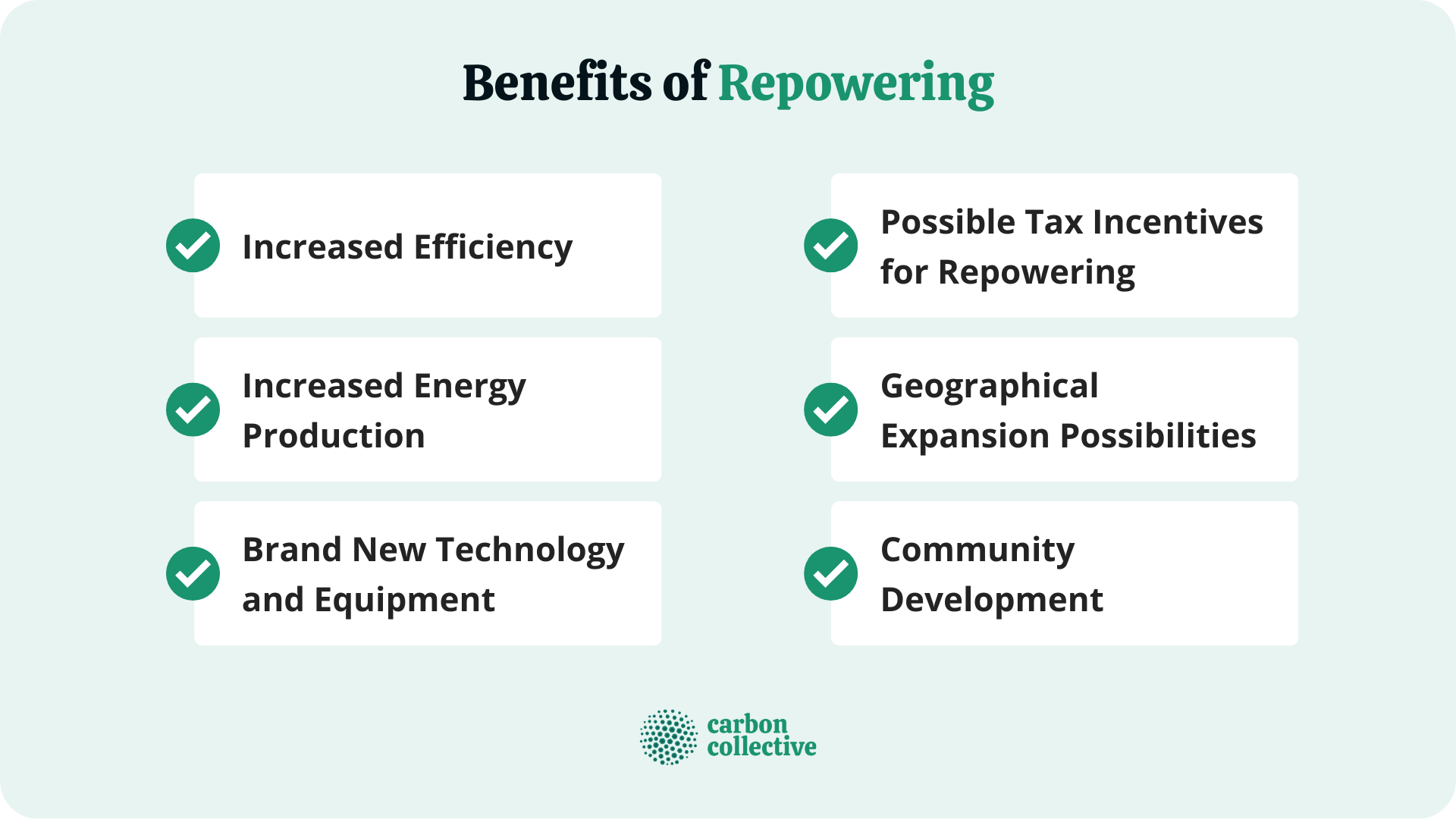Repowering
September 9, 2022
Author:
Zach Stein

What Is Repowering?
Repowering involves repurposing an existing wind or older power plant to achieve greater returns through increased efficiency and energy generation.
The repowered power plant and wind farm use existing infrastructure while repowering it with newer technology to generate a better source of energy.
When deciding to repower, the energy plant/farm can undergo a complete repower, a partial repower, or a retrofit/software upgrade.
For Power Plants
Repowering a power plant is one of the most cost-effective ways of repurposing an older facility since there is no need for new land or permits.
The repowered power plant uses existing infrastructure while repowering it with newer technology to generate a better source of energy.
For Wind Farms
Wind repowering repurposes existing wind farm infrastructure by adding new and improved turbines to generate more energy.
For example, an older 75-megawatt turbine could be repowered with a 107-megawatt turbine or two 1.5-megawatt turbines.
Impacts to Consider When Repowering
There are several things to consider when deciding to do wind projects repowering since it has subsequent impacts for local communities:
Land Use
Since repowering requires new siting permits, repowering on land will require additional land use. This means that it can use up more land, especially if the expanded repowered source produces more energy output than before.
Environment and Wildlife
Repowering may have a negative impact on the environment and wildlife, depending on the repowered source's previous energy production.
If repowering increases the energy output, a rise in bird mortality from turbine blades and heightened noise pollution will result.
Land Lease or Acquisition
Land lease or acquisition may be needed if repowering requires repurposing land for the repowered source. Acquiring new land will add further expenses, so potential costs require consideration when repowering an energy source.
Potential Displacement of Local Communities
Repowering may result in the displacement of local community members if new land is required for the repowered source.
This potentiality must always be considered when repowering an existing energy source in order to avoid any negative consequences for those who may be impacted.
Tax Revenue
Since repowering requires new siting permits and increases the energy output of repowered sources, tax revenue can increase in repowered areas.
Jobs
It may create new jobs and/or result in possible job losses for community residents.
Waste and Recycling
The repowering process results in repurposed turbines and repowered equipment that no longer has a use.
If repowering means repurposing land that houses the repowered source, this process will require additional waste and recycling initiatives to ensure that it does not pollute the repowered site or surrounding areas.
Benefits of Repowering
The repowering benefits include:

Increased Efficiency
Repowering repurposes older repowered sources with newer technology. Thus, repowering results in increased energy efficiency and generates repowered sources.
Increased Energy Production
It produces more energy output than before repowering efforts began.
Brand New Technology and Equipment
It uses new technology and equipment that improves safety and protection for the surrounding areas.
Possible Tax Incentives for Repowering
The repowered source may be eligible for tax incentives.
Geographical Expansion Possibilities
Repowering can result in a geographical expansion if it increases energy output.
Community Development
Repurposing land that currently houses the repowered source can result in community development.
The Bottom Line
Repowering involves repurposing an existing wind or older power plant to achieve greater returns through increased efficiency and energy generation.
This is achieved by increasing energy generation output, providing safety protection for surrounding areas, and utilizing new technology.
Benefits include geographical expansion possibilities, tax incentives, community development, increased energy output, and improved energy efficiency.
Repowering efforts may also have impactful effects. Potential impacts require consideration when repowering repowered sources to ensure the benefits outweigh any drawbacks.
FAQs
1. What is repowering?
Repowering involves repurposing older repowered sources to produce more energy output than before repowering. This can be achieved by utilizing new technology or repurposing existing land around repowered sources.
2. What are the benefits of repowering repowered sources?
There are several benefits, including increased efficiency, geographical expansion, tax incentives for repowered sources, and repurposing existing land around repowered sources to create community development.
3. What are the drawbacks of repowering repowered sources?
Potential drawbacks include increased costs due to land leases or acquisitions and the potential displacement of local communities. The latter may also result in repurposing land to create new communities.
4. How does repowering repowered sources work?
Repowering repurposes older repowered sources with newer technology. This results in improved efficiencies and energy output than before repowering efforts began.
Our difference
01.
We're clear eyed.
We think financial security and climate health are directly linked.
02.
We're independent.
We're not owned by a big bank or Wall Street firm.
03.
We're real people.
You'll feel it the moment you meet us.

